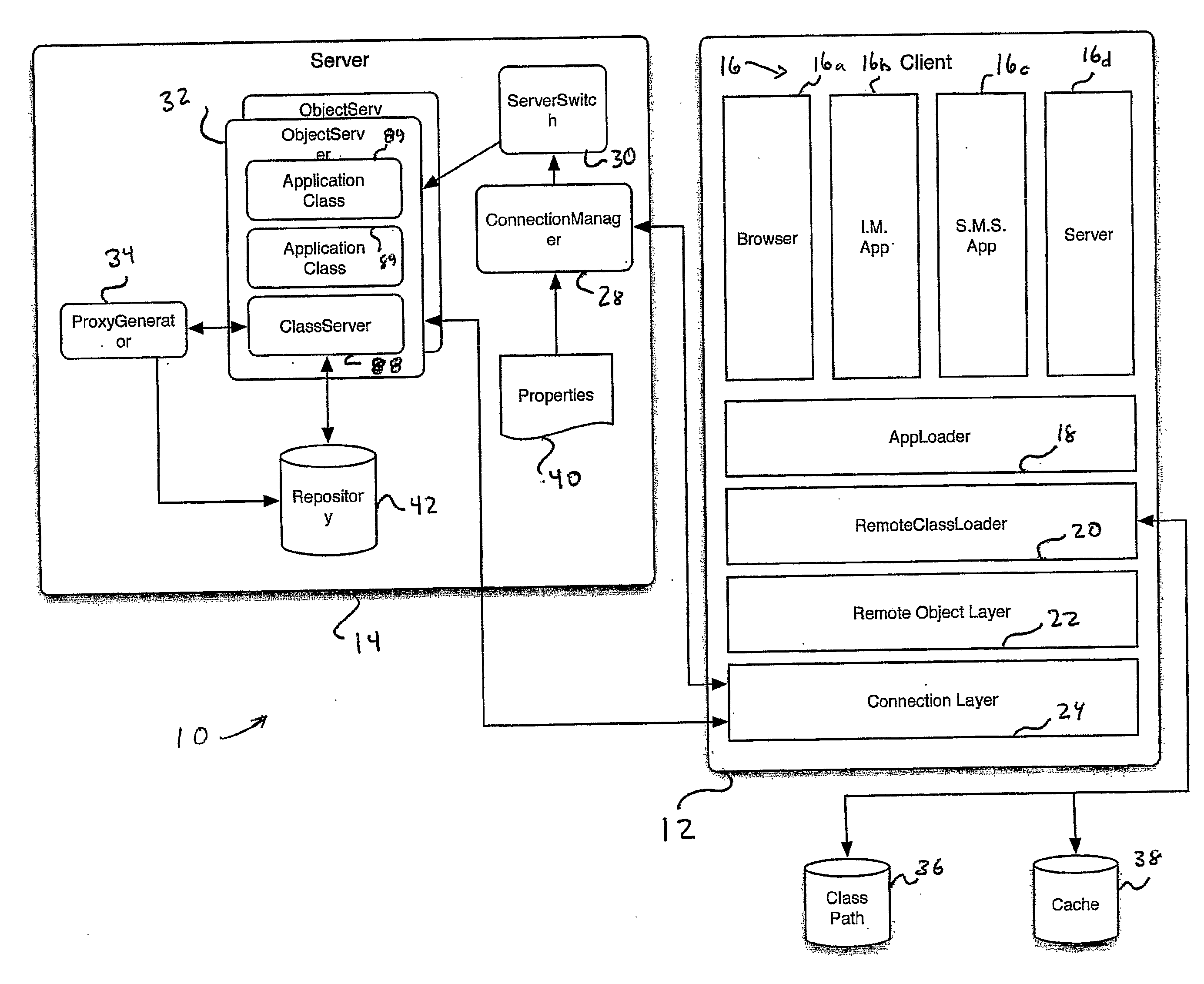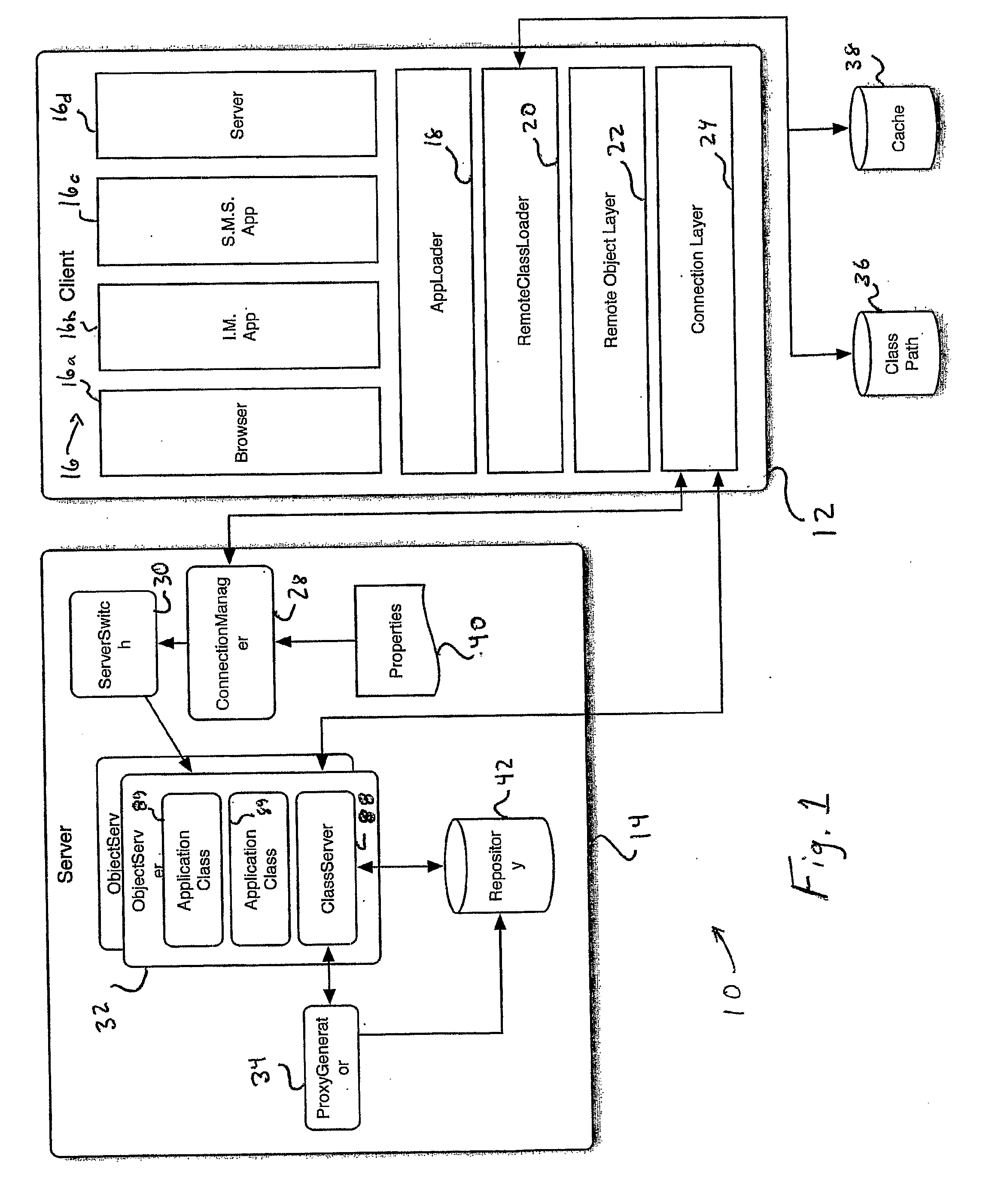Distributed Virtual Machine Architecture
a distributed virtual machine and virtual machine technology, applied in the field of software architectures, can solve the problems of imposing a significant burden on the programmer, inherently limited execution ability of the inability of program developers to execute native implementations of network applications
- Summary
- Abstract
- Description
- Claims
- Application Information
AI Technical Summary
Benefits of technology
Problems solved by technology
Method used
Image
Examples
Embodiment Construction
[0041]Referring now to FIG. 1, there is shown a distributed virtual machine (VM) software architecture 10 of the present invention. The architecture 10 includes a VM client 12 and a VM server 14. It is to be understood that the VM client 12 and VM server 14 do not respectively reside on, nor refer to, a client and server of a network, as such terms are typically understood, but may reside on any device of such network, as will be made apparent to those skilled in the art from the following description.
[0042]The VM client 12 in accordance with the present invention provides a platform on which one or more conventional applications 16 may execute. Any of these applications may be of the type that produces and consumes data only on the local device on which it executes or of the type that produces and consumes data transmitted on a network, such as the applications of the type described above. In cooperation with the VM server 14, the execution of these applications may be distributed ...
PUM
 Login to View More
Login to View More Abstract
Description
Claims
Application Information
 Login to View More
Login to View More - R&D
- Intellectual Property
- Life Sciences
- Materials
- Tech Scout
- Unparalleled Data Quality
- Higher Quality Content
- 60% Fewer Hallucinations
Browse by: Latest US Patents, China's latest patents, Technical Efficacy Thesaurus, Application Domain, Technology Topic, Popular Technical Reports.
© 2025 PatSnap. All rights reserved.Legal|Privacy policy|Modern Slavery Act Transparency Statement|Sitemap|About US| Contact US: help@patsnap.com



